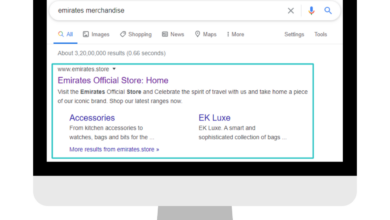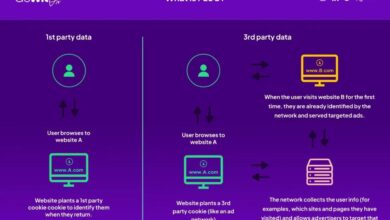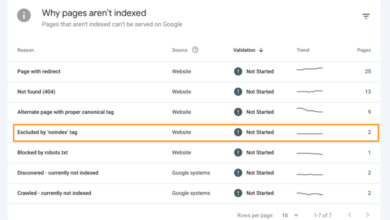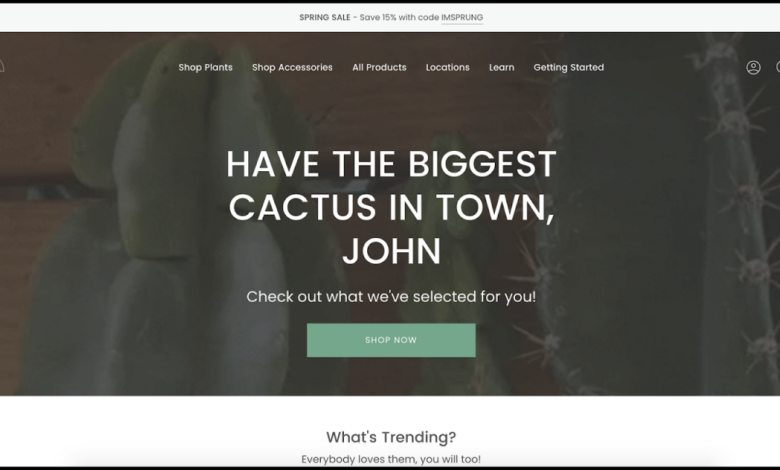
High Converting Landing Page Optimization A Guide
High converting landing page optimization is crucial for driving conversions and boosting business growth. This guide delves into the key elements needed to create effective landing pages. We’ll explore everything from defining high-performing pages and optimizing strategies to content and visual design, and finally, testing and analysis for continuous improvement.
We’ll dissect the characteristics of high-converting landing pages, comparing them to low-performing ones, and examine the measurable metrics that determine their success. From clear value propositions to compelling headlines, we’ll provide practical strategies and actionable examples to transform your landing pages into conversion machines.
Defining High-Converting Landing Pages
Landing pages are crucial for driving conversions, and understanding what makes a high-converting landing page is essential for maximizing your marketing efforts. A well-optimized landing page can significantly improve lead generation, sales, and overall ROI. This detailed guide will explore the key elements of high-converting landing pages, helping you create effective campaigns.High-converting landing pages are designed with a specific goal in mind: driving visitors to take a desired action, such as filling out a form, making a purchase, or requesting a demo.
They meticulously craft a user experience that aligns with their target audience’s needs and preferences, encouraging them to convert. This is achieved through a combination of well-structured content, compelling design, and persuasive messaging.
Key Characteristics of High-Converting Landing Pages
High-converting landing pages excel in several key areas. These characteristics are meticulously crafted to enhance user experience and motivate action. The design is streamlined, focusing on the specific objective, and the layout is optimized for ease of navigation and comprehension. Clear calls to action and compelling value propositions are vital elements.
Measurable Metrics for Assessing Performance
Landing page performance is assessed through various measurable metrics. These metrics provide valuable insights into the effectiveness of your strategies and help in identifying areas for improvement.
- Conversion Rate: The percentage of visitors who complete the desired action (e.g., submitting a form, making a purchase). This is a crucial metric for gauging the effectiveness of the page in achieving its goal.
- Bounce Rate: The percentage of visitors who leave the page without taking any action. A high bounce rate suggests potential issues with the page’s content, design, or user experience.
- Time on Page: The average duration visitors spend on the landing page. A longer time on page generally indicates that the content is engaging and relevant to the visitor’s needs.
- Click-Through Rate (CTR): The percentage of visitors who click on a particular element (e.g., a call to action button). This metric highlights the effectiveness of the call to action and its placement on the page.
- Form Abandonment Rate: The percentage of visitors who start filling out a form but do not complete it. This metric helps identify potential pain points in the form itself, such as excessive fields or unclear instructions.
Different Types of High-Converting Landing Pages
Landing pages cater to diverse marketing objectives. Understanding the specific purpose of the page is essential for designing a high-converting experience.
- Lead Generation Landing Pages: These pages aim to collect contact information from potential customers. They typically include forms that ask for names, email addresses, and other relevant details in exchange for valuable resources, such as ebooks or webinars.
- Product Showcase Landing Pages: These pages focus on highlighting a specific product or service. They often include detailed product descriptions, high-quality images or videos, and clear calls to action for purchase or further information.
- Event Registration Landing Pages: These pages promote events, such as webinars or conferences. They typically include registration forms and detailed information about the event, including dates, times, and speakers.
Comparison of High-Converting and Low-Converting Landing Pages
The following table contrasts high-converting and low-converting landing pages, highlighting key differences in their design and messaging.
| Feature | High-Converting | Low-Converting |
|---|---|---|
| Headline | Clear, concise, and directly addresses the visitor’s need. Emphasizes the value proposition. | Vague, generic, or fails to clearly state the value proposition. |
| Call to Action | Prominent, clear, and easily identifiable. Uses strong verbs and compelling language. | Hidden, unclear, or difficult to find. Uses weak or passive language. |
| Value Proposition | Clearly articulates the benefits and advantages of the offer, addressing the visitor’s pain points and desires. | Vague or incomplete, fails to highlight the unique value or solve a problem. |
Optimization Strategies for High Conversion Rates
Landing pages are crucial for driving conversions. Optimizing these pages for maximum impact involves understanding user behavior and implementing strategies that resonate with your target audience. A well-structured and engaging landing page translates directly into higher conversion rates, which is a core component of a successful online marketing strategy.Effective landing page optimization is not a one-time fix. It’s an ongoing process that involves continuous analysis, testing, and refinement.
By understanding user needs and pain points, businesses can create a compelling user experience that encourages conversions.
Clear Value Proposition
A clear value proposition is paramount for convincing visitors to take the desired action. This concisely communicates the benefits a product or service offers and how it solves a specific problem for the user. It’s crucial to focus on the user’s needs and how your offering directly addresses them. A strong value proposition fosters trust and encourages conversions.
Avoid generic statements; instead, emphasize the unique value your offer provides.
Compelling Headlines, High converting landing page optimization
Compelling headlines immediately grab attention and communicate the value proposition. They need to be concise, clear, and impactful. A well-crafted headline directly influences the user’s decision to engage further with the landing page. The headline should align with the overall message and promise of the page.
User Experience (UX) Optimization
User experience is paramount in optimizing conversion rates. A positive user experience encourages visitors to stay longer on the page, interact with elements, and ultimately convert. Key elements of a good UX include clear navigation, intuitive design, and fast loading speeds.
- Clear Navigation: Users should easily find the information they need without frustration. This includes logical placement of calls-to-action (CTAs) and clear links to related pages.
- Intuitive Design: The design should be visually appealing and easy to understand. Avoid clutter and use a consistent design language throughout the page.
- Fast Loading Speeds: A slow-loading page is a significant deterrent to conversion. Optimize images, leverage caching, and use a fast hosting service.
Crucial Elements for Optimizing Conversion Rates
Several key elements contribute to a high-converting landing page. These include a strong value proposition, a compelling headline, clear calls-to-action, and visually engaging design. Every element must work together to create a seamless user experience that motivates visitors to take action.
- Strong Value Proposition: Clearly communicate the unique benefits and value proposition of your offer. This must resonate with the target audience.
- Compelling Headlines: Craft headlines that are attention-grabbing and communicate the core message of the landing page.
- Clear Calls-to-Action (CTAs): Use clear and concise CTAs that encourage visitors to take the desired action. Examples include “Sign Up Now,” “Learn More,” or “Get a Quote.” The CTA should be visually distinct from the rest of the page.
- Visually Engaging Design: Use high-quality images and videos to create a visually engaging experience. Ensure the design is consistent with the brand identity.
Mobile Responsiveness
In today’s mobile-first world, mobile responsiveness is critical. A landing page that doesn’t adapt to different screen sizes will likely result in a poor user experience and lost conversions. Mobile-friendly design is essential for maximizing reach and conversions.
Optimization Strategies Table
Content Optimization Techniques
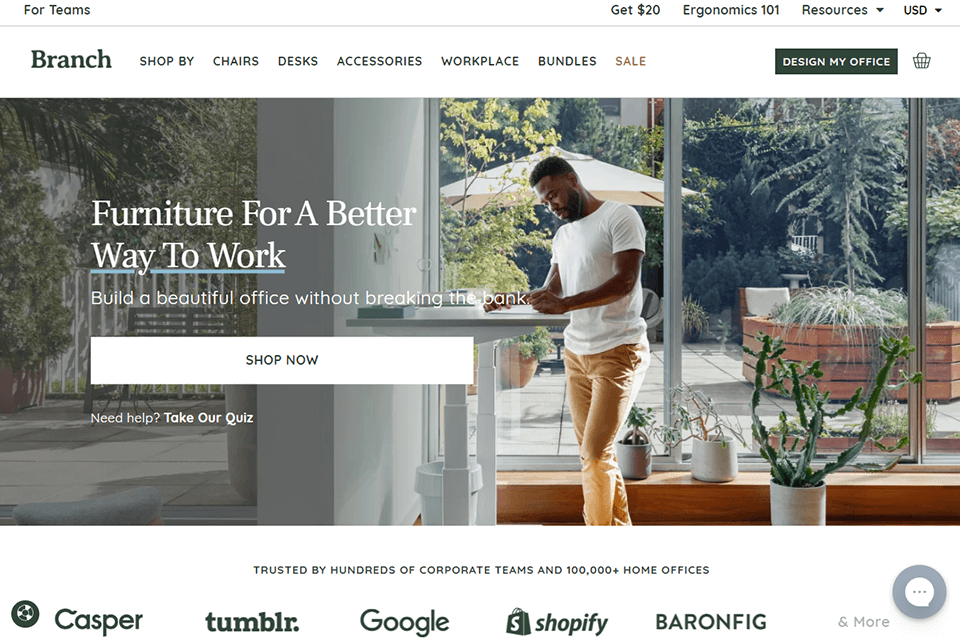
High-converting landing pages aren’t just about a pretty design; they hinge on compelling content that resonates with your target audience and drives action. This involves more than just filling the page with words; it’s about crafting a message that speaks directly to the visitor’s needs and desires. Effective content optimization is the key to unlocking a significant increase in conversion rates.Understanding your target audience is paramount.
Content should address their pain points, highlight the benefits of your offering, and clearly communicate the value proposition. This targeted approach is crucial for building trust and encouraging visitors to take the desired action.
Significance of High-Quality Content
High-quality content is the bedrock of a successful landing page. It builds trust, establishes authority, and directly impacts conversion rates. Well-researched and engaging content positions your brand as a reliable source of information and solutions. This, in turn, encourages visitors to trust your offering and proceed with the conversion process. Content should be more than just a collection of words; it needs to be a narrative that compels the reader.
Crafting Compelling Copy
Crafting copy that resonates with your target audience requires a deep understanding of their needs and motivations. Analyze their language, interests, and concerns. Research competitor strategies, identify their pain points, and offer solutions. Tailoring your copy to these specific needs enhances its impact. For instance, if your target audience is budget-conscious, emphasize value for money in your copy.
Avoid generic language; use specific examples and relatable scenarios.
Persuasive Language for Conversions
Persuasive language employs techniques that encourage visitors to take action. Use strong verbs, active voice, and concise language. Highlight the benefits, not just the features, of your product or service. Employ calls to action (CTAs) that are clear, concise, and compelling. For example, instead of “Learn More,” use “Download Your Free Guide Now.” Focus on the benefits of taking the action, such as increased efficiency or time savings.
High-converting landing pages are crucial for any business. Understanding your audience and crafting a compelling message is key. But what if you want to supercharge your conversions by also utilizing Vero social media marketing? vero social media marketing strategies can help drive traffic to your landing pages and boost engagement, leading to a more significant return on your investment.
Ultimately, the best landing page optimization integrates effective strategies from all channels to maximize results.
Concise and Scannable Content
Modern users are often overwhelmed by lengthy text. Concise and scannable content increases user engagement. Break up large blocks of text with headings, subheadings, bullet points, and visuals. Use clear and concise language. Highlight key information using bold text or bullet points.
Consider the use of numbered lists to prioritize information. This approach makes your landing page more user-friendly, leading to improved engagement and conversions.
Content Formats for High-Converting Landing Pages
Effective landing pages utilize various content formats to optimize the user experience. The optimal format depends heavily on the target audience and the specific message. This table illustrates some effective content formats for landing pages.
| Format | Example |
|---|---|
| Bullet Points | Key features, benefits, problem solutions, testimonials, and frequently asked questions can be effectively presented in bullet points. |
| Short Paragraphs | Short, focused paragraphs keep users engaged and encourage continued reading. |
| Question-Answer | Addressing potential customer concerns with direct answers builds trust and reduces hesitation. |
Call-to-Action (CTA) Optimization
Landing pages are more than just pretty designs; they’re about driving action. A well-crafted call-to-action (CTA) is the crucial element that nudges visitors towards conversion. Without a clear and compelling CTA, even the most engaging landing page will fail to achieve its goals. This section dives into the art of optimizing CTAs for maximum impact.A high-converting landing page is only as good as its call to action.
This crucial element guides users through the desired steps and translates interest into tangible results. The right CTA style, compelling language, and strategic placement are paramount to driving conversions.
Different Types of Effective CTAs
Effective CTAs come in various forms, each designed to resonate with specific user needs and contexts. Understanding these variations is key to choosing the most suitable CTA for your target audience and campaign goals.
- Buttons are a common and highly effective choice. They visually stand out, drawing attention to the desired action. A well-designed button, with appropriate colors and font, can significantly increase click-through rates. Buttons are especially useful for encouraging immediate actions like “Buy Now,” “Sign Up,” or “Download.”
- Links are often used for less immediate actions, such as reading more information or exploring additional content. A strategically placed link can guide users to further engaging content on your site, leading to conversions at a later stage. Links are often used for “Learn More,” “Read Review,” or “Explore Plans” CTAs.
- Forms are critical for collecting user information. Whether it’s gathering email addresses, requesting quotes, or scheduling appointments, forms are essential for engaging users and nurturing leads. Forms are best for more involved interactions, like collecting information for a personalized offer or a free consultation.
Importance of Clear and Concise CTAs
Clarity and conciseness are paramount in CTAs. Ambiguous or lengthy CTAs can confuse users and deter them from taking the desired action. A simple, direct message is more likely to resonate with the visitor.
- Using clear and concise language is essential for effective communication. Avoid jargon or overly technical terms that might confuse the user. Keep the message brief and to the point, focusing on the benefits for the user.
- Visual appeal is important. Using a contrasting color for the CTA button or text can draw attention and improve visibility. Ensure the CTA stands out against the background without being overwhelming.
Compelling CTA Examples
Compelling CTAs go beyond simple instructions; they create a sense of urgency and excitement. They speak directly to the user’s needs and desires. A well-crafted CTA can transform a visitor into a customer.
High-converting landing pages are crucial for any business looking to maximize conversions. Understanding user behavior and crafting a compelling call to action are key elements. A great example of someone deeply knowledgeable in this area is Nils de Moor, whose insights on landing page optimization are invaluable. Nils de Moor consistently delivers practical strategies for businesses to achieve better results.
Ultimately, mastering high converting landing page optimization can significantly boost your bottom line.
- A landing page promoting a new software subscription might use a button that reads “Unlock Your Productivity Now.” This is concise, action-oriented, and directly addresses the user’s desire for improved productivity.
- For a website selling online courses, a “Start Your Free Trial” button is a compelling CTA, emphasizing the value proposition of the courses while reducing the perceived risk of purchase.
- An e-commerce site selling fashion apparel might use a call to action that reads “Shop the Collection.” This is clear, concise, and speaks directly to the core purpose of the site.
CTA Style Comparison
The effectiveness of different CTA styles depends on the specific context and target audience. A well-structured table can aid in selecting the most appropriate style.
| CTA Style | Description | Example |
|---|---|---|
| Button | Visually prominent, encourages immediate action. | “Buy Now,” “Get Started,” “Download Now” |
| Link | Guides users to further information, suitable for less immediate actions. | “Learn More,” “Read Reviews,” “Explore Plans” |
Visual Design Elements for Conversion: High Converting Landing Page Optimization
Landing pages are more than just text; they’re a visual experience. A well-designed landing page can significantly improve user engagement and ultimately drive conversions. Visual elements like color schemes, imagery, and whitespace all contribute to a positive user experience and can impact whether a visitor takes the desired action. This section will explore the critical role visual design plays in landing page optimization.A visually appealing and user-friendly landing page creates a positive first impression.
This translates into a higher likelihood of visitors engaging with the content and taking the desired action. A poorly designed landing page, on the other hand, can deter visitors and lead to lost opportunities.
Impact of Visual Design on User Engagement
Visual design is crucial in capturing and maintaining user attention. High-quality images and videos, strategically placed elements, and a clear color scheme all contribute to a positive user experience. When a landing page is visually appealing, users are more likely to stay on the page longer, explore the content, and ultimately convert. Conversely, a cluttered or poorly designed page can quickly discourage visitors and lead to a high bounce rate.
Importance of High-Quality Images and Videos
High-quality images and videos are essential for conveying your message effectively and building trust. Images and videos that are visually appealing, relevant to the offer, and well-optimized for web performance can significantly improve conversion rates. For example, a product image that clearly showcases its features and benefits will increase the likelihood of a purchase. Similarly, a video demonstration of a product or service can help visitors understand the value proposition and increase their confidence in making a purchase.
Color Psychology and its Effect on Conversions
Color psychology plays a vital role in influencing user emotions and perceptions. Different colors evoke different feelings and associations, and understanding these effects is critical for creating a landing page that resonates with your target audience. For instance, using a vibrant red color can create a sense of urgency and excitement, while a calming blue can evoke trust and reliability.
Carefully selected colors can significantly impact conversion rates.
High-converting landing pages are crucial for any online business. Understanding how to optimize them is key, but it’s also important to think about how to attract and retain your audience. This often involves subscription paywall content, and if you’re looking for a clear and simple guide to subscription paywall content and SEO, check out this helpful resource: subscription paywall content and seo a simple guide.
Ultimately, the better your content strategy, the more likely you are to have a highly effective landing page.
Utilizing Whitespace Effectively for Readability
Whitespace, often overlooked, is a crucial design element. Effective use of whitespace can enhance readability, create visual hierarchy, and guide the user’s eye through the content. Too little whitespace can make the page feel cluttered and overwhelming, while too much can make it feel empty and uninviting. Finding the right balance of whitespace is key for optimal readability and user engagement.
Visual Design Principles for High-Converting Landing Pages
| Principle | Description |
|---|---|
| Color Palette | A consistent and well-chosen color palette can establish brand identity, evoke specific emotions, and enhance readability. Consider the psychological impact of different colors and select a palette that aligns with your brand and target audience. For example, using a professional and trustworthy color scheme can enhance credibility and trust in a financial services landing page. |
| Imagery | High-quality images and videos are crucial for showcasing products or services and building trust. Ensure images are relevant, high-resolution, and optimized for web performance to avoid slow loading times. Use images that are visually appealing and accurately reflect the quality and value of your offer. |
Testing and Analysis of Landing Page Performance
Landing page optimization isn’t a one-and-done affair. It’s an iterative process that relies heavily on testing and analyzing performance data. Understanding how users interact with your page, and pinpointing areas for improvement, is crucial for maximizing conversions. This phase goes beyond simple guesswork and dives into the concrete data that reveals the strengths and weaknesses of your design.Effective landing page optimization requires a data-driven approach.
By rigorously testing different elements and meticulously analyzing the results, you can continuously refine your pages to better meet the needs of your target audience and drive higher conversion rates.
A/B Testing Methodologies
A/B testing is a cornerstone of landing page optimization. It allows you to compare two versions of a page element (like a headline or call-to-action) to see which performs better. Different methodologies exist, and the best choice depends on the specific element being tested and the resources available. Split testing, for instance, can be applied to specific page sections, allowing you to compare variations.
Multivariate testing takes this a step further, allowing you to test multiple elements simultaneously to determine the optimal combination.
- Split testing: This is a common A/B testing approach where you compare two versions of a single element. For example, you might test two different headlines to see which generates more clicks. This method allows you to isolate the impact of a specific change.
- Multivariate testing: This methodology goes beyond comparing two versions by allowing you to test multiple variations of multiple elements simultaneously. This helps uncover the synergistic effects of different design choices. For example, you could test variations of the headline, call-to-action button, and image simultaneously to identify the most effective combination.
- Randomized Controlled Trials (RCTs): RCTs are a rigorous approach to A/B testing. They utilize random assignment to control variables and ensure a high degree of statistical significance. This method is essential for ensuring that your conclusions are not skewed by external factors.
Tracking Key Metrics for Optimization
Tracking the right metrics is essential for understanding the effectiveness of your landing page changes. This involves more than just focusing on conversion rates. A comprehensive approach looks at various metrics, including click-through rates, bounce rates, time on page, and even scroll depth. By tracking these metrics, you can gain a holistic understanding of user behavior and identify areas needing improvement.
- Conversion Rate: This is the percentage of visitors who complete the desired action (e.g., making a purchase, filling out a form). This is a crucial metric to track and improve over time.
- Click-Through Rate (CTR): This metric measures the percentage of users who click on a specific element (like a call-to-action button). High CTRs suggest that your calls to action are effective.
- Bounce Rate: This indicates the percentage of visitors who leave your landing page after viewing only one page. High bounce rates suggest issues with page engagement.
- Time on Page: This metric shows how long visitors spend on your page. A higher time on page usually indicates a more engaging and relevant experience.
- Scroll Depth: This measures how far down a user scrolls on a page. Understanding this can help identify areas where content is less engaging or not easily accessible.
Analyzing Data to Identify Areas for Improvement
Data analysis is the bridge between raw data and actionable insights. To identify areas for improvement, you need to compare the performance metrics of different versions of your landing page elements. Tools can provide visualizations of the data, making patterns and trends easier to spot. Look for significant differences in key metrics between variations to identify winning elements and potential problems.
Using Analytics Tools to Measure Performance
Numerous analytics tools are available to track and analyze landing page performance. Google Analytics is a popular choice, offering comprehensive data on user behavior, including sources of traffic, user demographics, and more. Using tools like these provides valuable insights into what’s working and what’s not on your landing page.
Common A/B Testing Scenarios
| Scenario | Description |
|---|---|
| Headline Variations | Testing different headlines to see which captures attention and encourages conversions. For example, one headline could focus on a problem solution, while another highlights a unique selling proposition. |
| Call to Action | Testing different calls to action to see which motivates users to take the desired action. This might include variations in wording, button color, or placement. |
End of Discussion
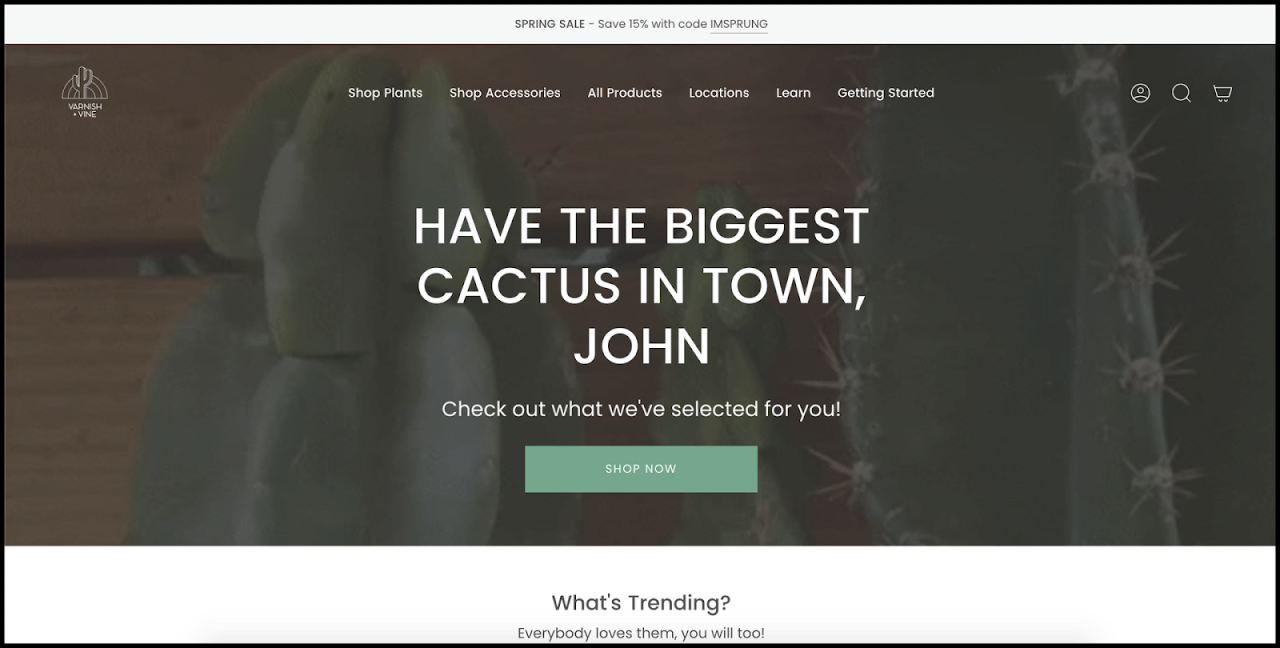
In conclusion, high converting landing page optimization is a multifaceted process that demands attention to detail in every element. From crafting compelling copy and engaging visuals to utilizing effective call-to-actions and A/B testing, we’ve covered the essential components for building high-converting landing pages. Remember, continuous testing and analysis are key to ongoing improvement. By implementing the strategies discussed, you’ll be well-positioned to maximize your conversion rates and achieve your business goals.
